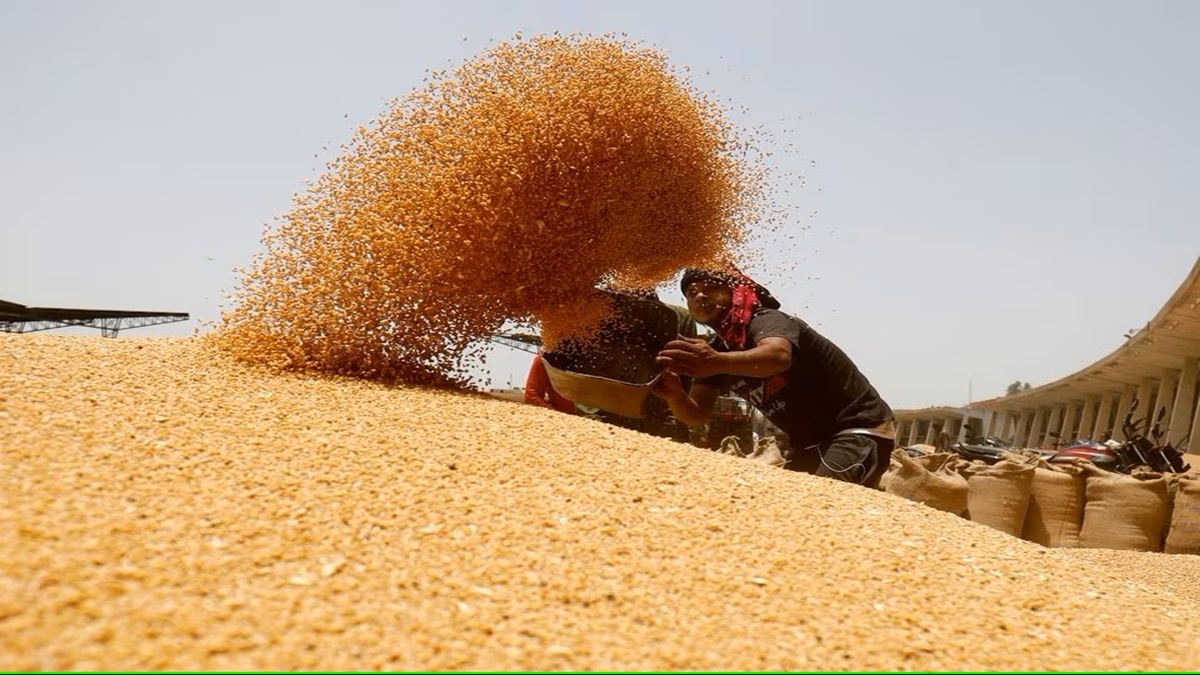India’s agricultural sector has scaled new levels, with the nation recording record foodgrain production in major crops such as rice, wheat, maize, groundnut, and soybean. The Ministry of Agriculture and Farmers’ Welfare has published the second advance estimates that confirm the 2024-25 year as a record year for production.
Spectacular Foodgrain Production Figures
Kharif foodgrain production has been estimated at 1,663.91 lakh metric tonnes (LMT) and rabi foodgrain production at 1,645.27 LMT. Production of rice increased greatly, with kharif rice output at 1,206.79 LMT, an increase of 74.20 LMT from last year’s 1,132.59 LMT. Rabi rice output was at 157.58 LMT.
Wheat production rose to 1,154.30 LMT, an increase of 21.38 LMT from the previous year’s 1,132.92 LMT. Millets (Shree Anna) production was 137.52 LMT for kharif and 30.81 LMT for rabi. Nutri/coarse cereals also contributed 385.63 LMT for kharif and 174.65 LMT for rabi.
Remarkable Performance in Pulses and Oilseeds
In the pulses crop, tur production was 35.11 LMT, and gram and lentil production was 115.35 LMT and 18.17 LMT, respectively.
The oilseeds crop also performed well, with groundnut production at 104.26 LMT for kharif and 8.87 LMT for rabi. Soybean production increased to 151.32 LMT, up by 20.70 LMT from last year’s 130.62 LMT. Rapeseed and mustard production was 128.73 LMT.
In addition, cotton production was 294.25 lakh bales (of 170 kg) and sugarcane production was 4,350.79 LMT.
Role of Government in Farming Growth
Union Agriculture Minister Shivraj Singh Chouhan, while unveiling the estimates, gave the credit of this record production of farm to the account of farmer-friendly Central Government’s schemes under Prime Minister Narendra Modi. According to him, support schemes and technological development of agriculture have been the backbone by increasing the production.
Data-Based Forecasts and Future Estimates
Projections were arrived at based on a combination of satellite imagery, state government updates, and crop weather data monitoring. Estimation of the kharif crops was carried out through Crop Cutting Experiments (CCEs), and estimates of the rabi crop were derived by calculating average yield, with provision to further update future estimates.
Besides that, the Ministry has also conducted intense stakeholder consultations with government departments and industry experts in a bid to build upon estimates. The subsequent third advance estimates will capture summer crop numbers, providing an overall picture of India’s success story in agriculture.
Read Also: UPL Ltd. Leads Patent Race In India’s Agriculture Sector








